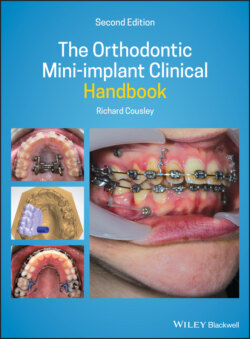Читать книгу The Orthodontic Mini-implant Clinical Handbook - Richard Cousley - Страница 14
1.4 Using the Right Terminology
ОглавлениеUnfortunately, a misleading array of terms has been used for bone anchorage devices (BADs) and their applications in both journals and the commercial literature. Essentially, it is best to encompass all types of fixtures which provide skeletal anchorage under the umbrella terms BADs or temporary anchorage devices (TADs), although the latter term does not indicate the essential role of bone in this anchorage. This book covers only one of the three types of BADs: mini‐implants. Whilst the terms mini‐implant and miniscrew are used interchangeably in the literature, it is erroneous to use the terms microscrews or microimplants since these fixtures are small (mini) and not microscopic. I prefer the term mini‐implant since it conveys the small size and implantable nature of these temporary fixtures.
Second, there appears to be much misunderstanding over whether mini‐implants osseointegrate. Most mini‐implants are made from either titanium or titanium alloy and histological studies show variable levels of bone–implant contact (BIC) [2,3]. However, it is misleading to refer to this as osseointegration. Rather, clinical usage and percussion indicate that mini‐implants are mechanically retained (like bone fixation screws) rather than forming a clinically discernible ankylotic union with the bone (which occurs with restorative implants secondary to the initial BIC phase). Hence, mini‐implants can be immediately loaded and easily unscrew, usually without anaesthetic, at any time after insertion. This may be because of their relatively smooth surface and possibly because the surface contact is more a physical phenomenon than a biochemical one.
Mini‐implants are mechanically retained (like bone fixation screws) rather than forming a clinically discernible ankylotic union with the bone.
